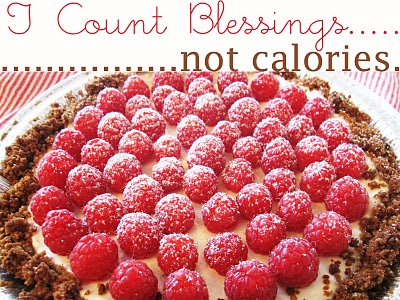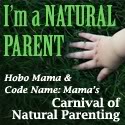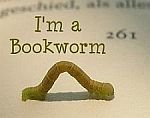I look forward to the Botany field trip to my family’s farm all year. Today, I took 22 juniors and seniors and taught them in my favorite place: outside. In my experience, learning in the field is completely different from learning in the classroom. The outdoors lets kids act more naturally, feeling free to ask questions or make comments as they arise. They explore, and a lot of learning takes place outside of what was planned.
 We began our trip this morning by walking all around the farm, identifying plants as we went. We walked through the apple orchard, past the red raspberries, by the corn field, into the woods, by the river, under the covered bridge by the pond, and back. All the kids were excited and enjoyed the walk, and I couldn’t have asked for better weather. They got to pick a few apples for a lesson later on, see the farm animals and feed apples to the horses, and ask me questions about farming, both general and specific. As we walked, we saw all types of plant and animal life, including a monarch butterfly and a bee hive in an apple tree. We talked about the leaves changing color, and how to tap maple trees. My students took pictures of themselves, the scenery, and each other. One girl even asked me to pose with them.
We began our trip this morning by walking all around the farm, identifying plants as we went. We walked through the apple orchard, past the red raspberries, by the corn field, into the woods, by the river, under the covered bridge by the pond, and back. All the kids were excited and enjoyed the walk, and I couldn’t have asked for better weather. They got to pick a few apples for a lesson later on, see the farm animals and feed apples to the horses, and ask me questions about farming, both general and specific. As we walked, we saw all types of plant and animal life, including a monarch butterfly and a bee hive in an apple tree. We talked about the leaves changing color, and how to tap maple trees. My students took pictures of themselves, the scenery, and each other. One girl even asked me to pose with them.
When we got back to the farm market, I gave the class some time to themselves. Some of them wandered through the maze, visited the animals, or bought hot chocolate. Some of them continued to ask questions. During this brief break, I set up the next activity: an Apple Tasting.
 I got the idea for an Apple Tasting from what I had heard about Wine Tastings. I did a little research and discovered that some people do have parties for the sole purpose of trying different varieties of apples. I gathered up the apples that students picked on our walk and grabbed a cutting board and knife. I instructed the students to take notes on the apple’s name, interesting facts, skin color and texture, and the color, smell, taste and texture of the flesh of the apple. They each made a chart in their notebooks to keep their data. Then, variety by variety, I sliced the apples into small pieces and gave one to each student. We started with Mutsu, a giant yellow-green apple that’s tart and best for baking. Students discussed the “appley” smell and the yellowish tint of the flesh. Next, we moved on to Red Delicious, a variety that most people know well. Then, on to Ida Red, a bright red, sometimes orangey apple with crisp white flesh. My favorite, the Macoun, came next. I told students that Macouns are my favorite, and many of them agreed. Finally, we had the shiny, beautiful Empire. Lots of kids decided this was their favorite because of both its beauty and its taste. One student remarked how it was both sweet and tart at the same time. During the tasting, the students were surprised that I could tell the apples apart by looking at them. I explained that, since I grew up here, I’ve eaten a lot of different apples in my day! I also explained that sometimes I don’t know for sure what kind an apple is until I’ve tasted it. Thinking about it now, I think an Apple Tasting would be a fun event to host for friends. Just add some cheese, bread and drinks and what a fun time that would be. Maybe next year…
I got the idea for an Apple Tasting from what I had heard about Wine Tastings. I did a little research and discovered that some people do have parties for the sole purpose of trying different varieties of apples. I gathered up the apples that students picked on our walk and grabbed a cutting board and knife. I instructed the students to take notes on the apple’s name, interesting facts, skin color and texture, and the color, smell, taste and texture of the flesh of the apple. They each made a chart in their notebooks to keep their data. Then, variety by variety, I sliced the apples into small pieces and gave one to each student. We started with Mutsu, a giant yellow-green apple that’s tart and best for baking. Students discussed the “appley” smell and the yellowish tint of the flesh. Next, we moved on to Red Delicious, a variety that most people know well. Then, on to Ida Red, a bright red, sometimes orangey apple with crisp white flesh. My favorite, the Macoun, came next. I told students that Macouns are my favorite, and many of them agreed. Finally, we had the shiny, beautiful Empire. Lots of kids decided this was their favorite because of both its beauty and its taste. One student remarked how it was both sweet and tart at the same time. During the tasting, the students were surprised that I could tell the apples apart by looking at them. I explained that, since I grew up here, I’ve eaten a lot of different apples in my day! I also explained that sometimes I don’t know for sure what kind an apple is until I’ve tasted it. Thinking about it now, I think an Apple Tasting would be a fun event to host for friends. Just add some cheese, bread and drinks and what a fun time that would be. Maybe next year…
After the Apple Tasting, we took a break for lunch. I had told the students to bring lunch, and some supplemented with drinks, cookies, apples, and ice cream from the store. They were happy to meet my grandmother, who was delighted to meet them. Of course, fresh cookies had just come out of the oven and we all needed to have some. (I learned last year that the Apple Tasting needs to be done before lunch, since the students were too full when we waited until after lunch!)
 Finally, we got to do the Pumpkin Dissection. Students paired up and measured each little pumpkin’s circumference and the length of the stem, then sliced it open to learn the parts and count up the seeds. We talked about the wall of the pumpkin, or pericarp, with it’s three layers: exocarp, mesocarp and endocarp. We talked about the technical name for the stem: peduncle. We talked about the fibrous strands, seeds, and blossom end of the pumpkin. Many of my students are growing squash and pumpkins in the greenhouse now at school, so we discussed the different parts of the plant and how the fruits are formed (yes, if it has seeds, it’s a fruit!) One girl volunteered to roast the seeds, so she collected them all and will bring them in next class to share. After all the learning was done, I of course let the kids carve some faces in their pumpkins. It is my hope that these students will one day share pumpkin anatomy with a family member or friend, because sometimes informal learning is the most fun.
Finally, we got to do the Pumpkin Dissection. Students paired up and measured each little pumpkin’s circumference and the length of the stem, then sliced it open to learn the parts and count up the seeds. We talked about the wall of the pumpkin, or pericarp, with it’s three layers: exocarp, mesocarp and endocarp. We talked about the technical name for the stem: peduncle. We talked about the fibrous strands, seeds, and blossom end of the pumpkin. Many of my students are growing squash and pumpkins in the greenhouse now at school, so we discussed the different parts of the plant and how the fruits are formed (yes, if it has seeds, it’s a fruit!) One girl volunteered to roast the seeds, so she collected them all and will bring them in next class to share. After all the learning was done, I of course let the kids carve some faces in their pumpkins. It is my hope that these students will one day share pumpkin anatomy with a family member or friend, because sometimes informal learning is the most fun.
On the bus ride back to school, students thanked me for the field trip. Some of them had bought apples or pies to bring home, and everyone remarked how they loved seeing the animals. I hope that they’ll share their good experiences with their families and friends, and that my Botany program will continue to grow. Today is one of those days when I’m very happy to be a teacher.


















Experiential learning at its best!!! How fun that you got to be on the other side . . . a visitor, along with your students, delighting in every delightful aspect of the farm, especially at this harvest time of year! I always enjoyed sharing fun on the farm with our many school visitors. It’s nice to see that high school students are just as entranced as elementary school children! Meanwhile, I spent my day IN school, on this gorgeous day!!!
How absolutely wonderful, Abbie!! I hope my boys are able to have such experiences some day. Way to get the kids outside and engaged.
Thanks, mom. I went with my nursery school class, had my high school friends work there, brought my entomology class, and now I bring my own students. It makes a nice circle.
GB- I’m sure your sons will have wonderful adventures in the future! If they don’t have these learning experiences in school, you can create them yourself!
I wish you were my biology teacher. Instead, I got stuck with a football coach with a butt chin. Sigh.
Abbie, our Montessori group tried an apple tasting a few weeks ago. We asked the children to practice cutting the apples and then we discussed the color, taste, and textures of the apples. They loved this one!
By the way, I think that a pie tasting party would be great too, although I suppose there are contests for that one, huh?
Oh, and I agree with theSpectrum. I totally would have digged having you for my bio teacher.
Wonderful! As an eco-psychologist in the making, eco-learning and eco-therapy are essential to my idea of how children ought to be raised. The nature classroom has no equal.
Once I become better aquainted with the local fruits, I think that a tasting party would be great fun to host.